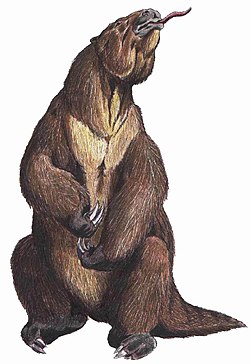| Pattersonocnus | |
|---|---|
| Scientific classification | |
| Domain: | Eukaryota |
| Kingdom: | Animalia |
| Phylum: | Chordata |
| Class: | Mammalia |
| Order: | Pilosa |
| Family: | † Megalonychidae |
| Genus: | † Pattersonocnus Rincón et al., 2019 |
| Species: | †P. diazgameroi |
| Binomial name | |
| †Pattersonocnus diazgameroi Rincón et al., 2019 | |
Pattersonocnus is an extinct genus of megalonychid sloth that lived during the Miocene in Venezuela 11.6 million years ago. The genus contains one known species, Pattersonocnus diazgameroi. Fossils have been found in the Urumaco Formation of Venezuela. [1]

